Nikon D3300 Review
Nikon D3300 Introduction
The Nikon D3300 is a refined version of its predecessor. This entry-level DSLR, like the D3200 before it, offers a 24 megapixels APS-C sensor in a remarkably compact body while sporting the usual electronic-only Nikon F mount. The enhancements of the D3300 include an anti-alias-filter-free sensor and faster performance, including 5 FPS continuous drive.
The D3300 feature-set includes basic manual controls with custom white-balance and spot metering. Its Live-View forms the basis for full 1080p HD video at 60 FPS with continuous autofocus capability and a stereo audio-input to capture sound from an external source. As such, the D3300 is targeted at people upgrading from a fixed-lens camera that do not want to lose video functionality while getting image quality and performance benefits of a basic DSLR.
This detailed digital camera review takes a close look at the Nikon D3300's features, ergonomics, usability, image quality, performance, photographic controls and all-new video recording features.
Nikon D3300 Features
Sensor
- 24 Megapixels CMOS sensor
- ASP-C sensor-size, 1.5X crop-factor
- No Anti-Alias filter
- Built-in Dust-Reduction
- Nikon F lens mount without AFCoupling
Exposure
- ISO from 100 to 25600
- Auto ISO, customizable max and shutter-speed
- 1/4000s to 30s shutter-speeds, plus Bulb mode
- Multi-segment, center-weighed and spot metering
- Standard PASM full manual controls, including Program-Shift
- Two fully automatic mode
- 7 Additional scene modes
- Exposure compensation: ±5 EV in 1/3 EV steps
- Flash compensation: -3..+1 in 1/3 EV steps
- Flash modes: Normal, Redeye, Slow, Slow with redeye and Rear-Curtain sync
- Manual Flash, full to 1/32 power
Image Parameters
- Automatic and preset White-Balance, all fine-tunable along 2 axis in 13 steps
- 7 sub-types of fluorescent white-balanceSodium-Vapor, Warm White, White, Cool White, Day White, Daylight and Mercury Vapor.
- Custom white-balance using immediate capture or reference image
- Customizable sharpness, contrast, brightness, saturation and hue
- Adaptive D-Lighting for high-contrast situations
- Optional Noise-Reduction
- Optional Automatic distortion correction
- sRGB or Adobe RGB color space
- JPEG and RAW modes
- Built-in RAW conversion
- Built-in image retouching
Focus & Drive
- Single-Shot (AF-S), Continuous (AF-C), 3D Tracking & Manual focus (MF)
- Face-Detect AF in Live-View
- 11-point Phase-Detect autofocus system
- 5 FPS continuous drive, max 100 JPEG or 6 RAW
- 2s, 5s, 10s or 20s self-timers, 1-9 shots
- Front & back IR remote receivers
- Wired-remote terminal
- Optional AF-assist
Display & Viewfinder
- 95% coverage viewfinder with 0.85X magnification
- 3” LCD 920K Pixels
- Partial Live-View with Subject Tracking and Face-Detect autofocus
- Image review with magnification and luminance histogram
Video
- 1920x1080 @ 60 FPS 1080p HD video capture
- Contrast-Detect autofocus available during HD video recording
- Two compression levels
- Built-in microphone, 20 levels
- Optional Wind-Filter
- Optional manual-controls
- Mini-Jack stereo audio input
Misc
- Built-in popup flash
- Standard hot-shoe
- Single control-dial
- Customizable function button
- Customizable AE-L/AF-L button
- Rangefinder manual focus assist
- HDMI 1080p
- USB 2.0
- Lithium-ion battery
- SDXC memory support
NOTE The Nikon D3300 is extremely similar in ergonomics and features to the D3100, large portions of this review are taken from the Nikon D3100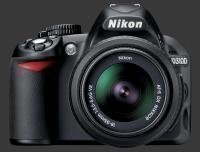
Nikon D3100 review. For image quality and performance, go directly to page 3. The differences between these models are highlighted in the text above and below for those who wish to know.
Nikon D3300 Usability - How easy is it to use?
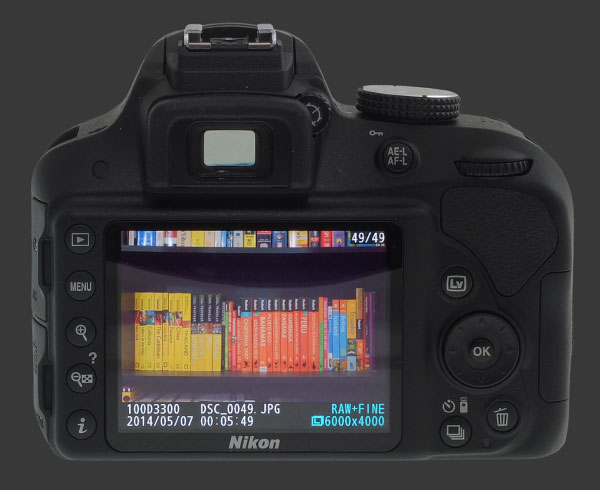
The Nikon D3300 is externally identical to its predecessor with two exceptions:
- The viewfinder is slightly larger at 0.85X magnification, versus 0.8X.
- The Drive and Delete buttons have moved a little.
No need to repeat exactly the same text twice. Read the Usability page of the Nikon D3200 review to find out about its ergonomics, if you are not familiar with it. Otherwise, keep reading to learn how the D3300 performs.
Nikon D3300 Performance - How well does it take pictures?
Ultimately, it is image quality that makes a camera worth buying. For an SLR, image quality greatly depends on the lens. While color, noise, exposure and dynamic-range are properties of a camera, distortion, vignetting and chromatic aberrations are properties of the lens. Sharpness and contrast depend on the weakest link. That is, the camera cannot capture more details than the lens lets through. Conversely, it is quite possible for a lens to transmit more details than the sensor can capture.
Note that the 24 megapixels sensor of the D3300 is very demanding and requires a lens with an great resolving power. This means one of Nikon's premium lenses instead of a typical kit-lens which should be avoided at all costs. The image-gallery was taken with the 18-55mm and one can easily see how inconsistent the sharpness. Small apertures are required to get anything remotely acceptable. In order to show the resolving power of the D3300, indoor ISO crops were taken with a Nikkor AF-S 24mm F/1.4G ED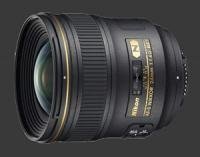
Nikkor AF-S 24mm F/1.4G ED.
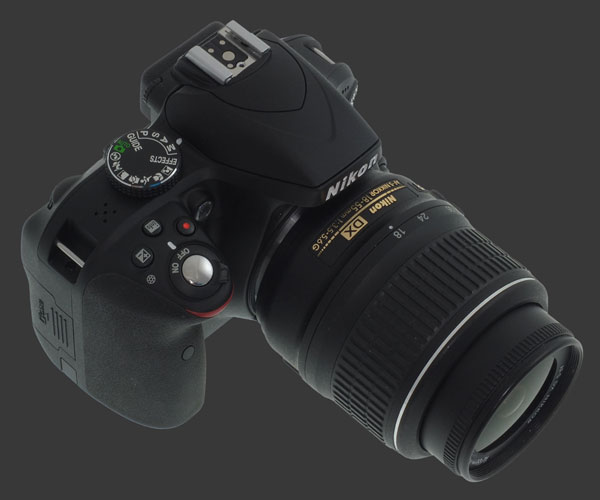
Image-quality is quite good with a suitable lens. The lack of anti-alias filter means it can capture finer details than previous models, now on-par with Nikon's mid-range DSLRs. Sharpness also stays more consistent as ISO sensitivity is raised when Noise-Reduction is disengaged.
Noise levels are surprisingly low until ISO 400 and barely noticeable at ISO 800. By ISO 1600, a hint of color noise starts appears but considering a whopping 24 megapixels of resolution, this is unlikely to be visible in most common print sizes. As usual, noise increases steadily at each additional stop. Still, ISO 3200 and 6400 are very usable for mid-size prints. The ISO 12800 setting is a stretch but remains usable for small 4x6 prints and web use. The newly added ISO 25600 level is one step too far though.
The multi-segment metering of this DSLR has been improved over its predecessor. It does not overexpose so severely but it still happens more than average. Small-to-medium bright areas are often clipped, turning down EC is necessary in scenes with a little bright sky or strong highlights. It now shows up to 1 EV of over-exposure under typical conditions.
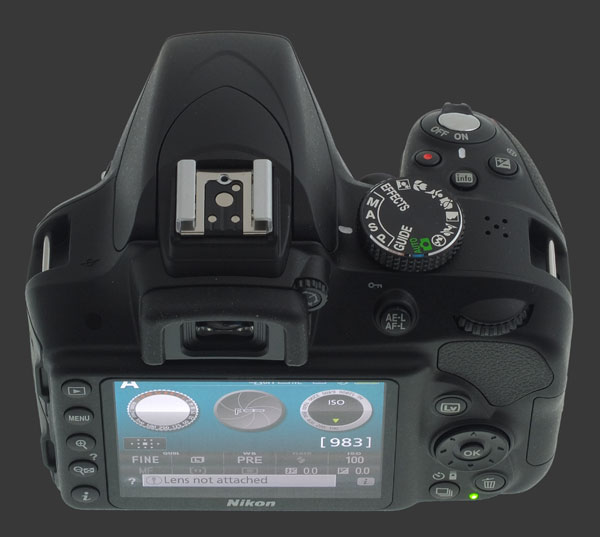
There are 6 Picture Control styles, each can be modified in terms of sharpness, contrast, brightness, saturation and hue. The Neutral setting provides the most realistic rendition but some colors are noticeably off. A Hue of -1 and Contrast of -1 produces more natural results while rendering more details in shadow areas. The Standard setting is much more punchy yet colors are way too red. Both Landscape and Vivid modes show over-the-top-colors not suitable to represent reality.
Sharpness is controllable in 10 steps. The default of 2 is rather soft, particularly for a camera without an anti-alias filter. Pushing it to 4 improves things considerably with introducing visible sharpening artifacts. Although anything more shows halos along edges.
The white-balance system performs well. Preset and custom white-balance are very accurate. Automatic white-balance is good but not perfect. In broad daylight, there is not much to complain about but it sometimes leaves a cast under artificial light at night. Most times, the cast is gentle and color-temperature is rarely significantly off. Custom white-balance works just as intended though.
The Nikon D3300 is impressive when it comes to speed, compared to other entry-level offerings. This is one of the areas where Nikon improved the most since the D3200. Operations are nearly instant. Shutter-lag is instant, followed by a very brief blackout. This camera does not have a focus motor, so it relies on lenses to perform AF. This means that focus speed can be extremely variable. Particularly with the supplied kit-lens, the D3300 AF is sluggish by modern standards. Switch that for an AF-S 24mm F/1.4G and it becomes much more reasonable.
Performance of the D3300 is characterized by the following measurements:
- Power On: Instant. Excellent.
- Power-Off to First-Shot: 1s. Superb.
- Autofocus: ½ - 1s. Heavily depends on the lens. Good to slow. Focus confirmation is instant though.
- Shutter-Lag: Nearly instant. Good.
- Blackout: Very short. Really good.
- Shot-to-Shot: 2/3s. Average.
- Video Recording: ¾s to start, instant to stop. Average. Too bad for the slow start.
- Power Off: Just under 1s, very good.
As shown above, this DSLR performs quite well. Shot-to-shot speed is unimpressive, despite sustaining 5 FPS in continuous drive mode. The D3300 lacks a video mode again and the sensor is therefore unprepared. It takes almost 1 second after pressing the Video-Record button for the camera to start recording.
The Nikon D3300 is Shooting-Priority which lets it return instantly to Capture mode from Playback by touching the shutter-release. The only time it takes longer is when shooting in Live-View. From there, exiting Playback takes just a little more time.
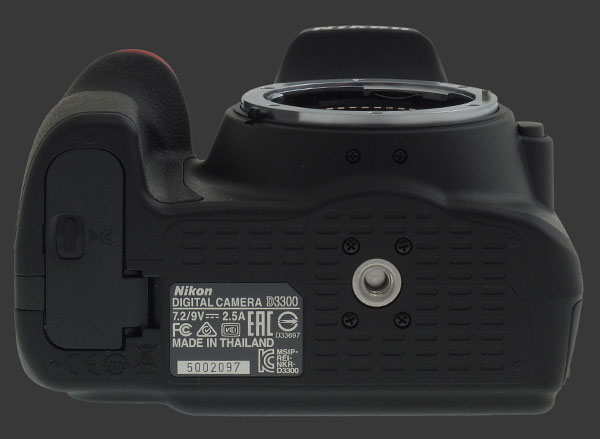
This entry-level DSLR has good throughput to the memory card yet a small internal buffer. It manages to shoot 6 RAW files before slowing down, while it can take up to 100 JPEG images. This gives it a whopping 20 seconds of full-speed continuous drive.
The new sensor of the D3300 uses much less power than its predecessor's. This one reaches 700 shots-per-charge according to the CIPA standard which is good for a compact DSLR. Without using the built-in flash, more photographs can be taken without changing batteries.
Nikon D3300 Conclusion
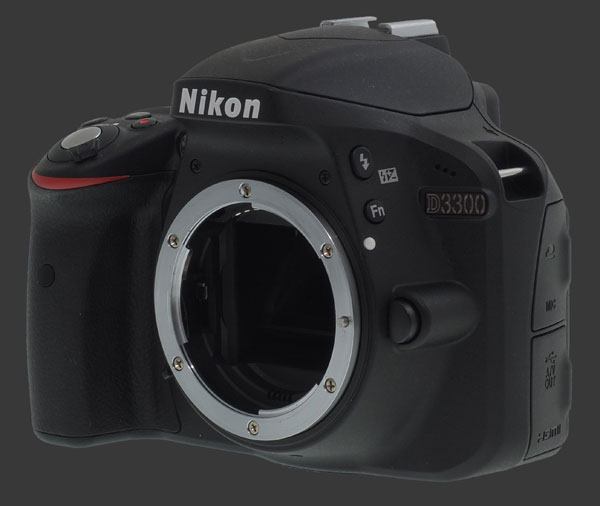
The Nikon D3300 delivers an incremental improvement over its predecessor with its new 24 megapixels CMOS sensor without anti-alias filter. This gives it a minor edge over an already good entry-level offering. Performance also improved slightly which is obviously welcome yet not dramatic in any way.
Everything said about the Nikon D3200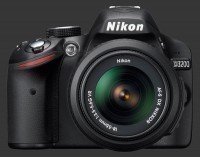
Nikon D3200, applies to the D3300. Both models are capable entry-level DSLRs and a worthy upgrade from compact or bridge cameras. If one already has a D3200, no need to jump on the D3300 which needs even sharper lenses to deliver its best image-quality.
Images from the Nikon D3300 have low image-noise and hold on to crisp details with a sufficiently good lens. Metering, color and white-balance are not perfect but certainly good. All of these can be overridden with controls in the D3300's menu. This may be a fast camera but, remember, its entry-level status means it is not too quick to operate.
Video from the Nikon D3300 is very nice. Outside of the ¾ second delay at the start of recording, its 16:9 overlay helps preview framing correctly and captures video with very smooth motion and crisp details. There are plenty of video features for an entry-level model, including stereo sound input and adjustable microphone sensitivity. Autofocus is possible while recording too for those who feel the need.
Both feature set and ergonomics are very reasonable for an entry-level DSLR. Pros will feel limited but novices will not find this camera daunting. Its more advanced features like spot-metering and white-balance fine-tuning make nearly any desired result achievable. Luckily for advanced photographers, the Nikon D3300 supports an optional remote-trigger which get around the annoyance of the self-timer which resets itself between shots.
In the end, the D3300 proves to be a capable camera truly excellent output. It delivers image-quality worthy of a DSLR in a compact and simple-to-use design. At its current price, it provides a great value to get into the Nikon system where plenty of other DSLRs and lenses await.
 |
Please Support Neocamera
All information on Neocamera is provided free of charge yet running this website is a huge endeavor. Purchases made via affiliate links found throughout the site help keep it running and up-to-date. There is no additional cost to you, so please consider buying via these links to our affilates:
If you found any information on this site valuable and did not purchase via our affiliate links, please considering donating via PayPal:
Any amount will be greatly appreaciated. Thank you for your support!
Nikon D3300 Highlights

Sensor-Size: 24 x 16mm

Actual size when viewed at 100 DPI
| 24 Megapixels DSLR | ISO 100-25600 |
| Nikon F Mount 1.5X FLM | Shutter 1/4000-30s |
| 95% Coverage Medium Viewfinder | Full manual controls, including Manual Focus |
| Built-in Dust Reduction | Custom white-balance |
| 5 FPS Drive, 100 Images | Spot-Metering |
| 1920x1080 @ 60 FPS Video Recording | Hot-Shoe |
| 3" LCD 920K Pixels | Stereo audio input |
| Lithium-Ion Battery | |
| Secure Digital Extended Capacity |
Updates
2025.01.18

Fujifilm GFX 2025 Lens Roundup
Lens Review roundup of Fujifilm GFX Medium-Format lenses. Quality, performance and handling of the GF20-35mm F/4R WR, GF30mm F/3.5 Tilt-Shift and the GF55mm F/1.7.
2024.11.18

Best 2024 Photography Gifts for Every Budget
Great gifts for photographers and photo enthusiasts selected for every budget among the best products of 2024.
2024.08.07

Eye Protection Tips for Professional Photographers
The four main considerations for professional photographers regarding eyewear.
2024.07.14

Fujifilm X100VI Review
Flagship fixed-lens compact digital camera with a 40 MP sensor and Image-Stabilization, a first for the series. Retro design featuring dual control-dials, plus direct ISO, Shutter-Speed and EC dials. Its hybrid viewfinder can switch between EVF and OVF mode.
2024.05.09

Fujifilm GFX100 II Review
Flagship 102 Megapixels Medium-Format Mirrorless Digital Camera with 8-Stop 5-Axis IBIS, 8 FPS Drive, 8K Video and 400 MP Super-Resolution capture in a weatherproof and freezeproof body with dual control-dials and dual memory-card slots.
2024.04.03

Fujifilm X-T5 Review
Newest Fujifilm flagship boasting a 40 MP APS-C sensor, 5-axis IBIS with 7-stop efficiency, 15 FPS continuous drive, 6.2K Video capture, dual control-dials and dual SDXC UHS-II slots in a sturdy weatherproof and freezeproof body.
2023.11.20

Best Digital Cameras of 2023
Find out which are the Best Digital Cameras of 2023. All the new Mirrorless Digital Cameras from entry-level to high-end professional.
2023.07.10

Fujifilm X-H2 Review
40 Megapixels APS-C Hybrid Mirrorless Digital Camera with 7-stop IBIS. Fastest shutter ever and 8K video capture. Large builtin EVF with 0.8X magnification and 5.8 MP, plus an Eye-Start Sensor. Packed with features and large number of controls in a weatherproof and freezeproof body.
2023.05.07

Sony FE 20-70mm F/4G Review
Review of the unique Sony FE 20-70mm F/4G lens. The optical zoom of this lens spans ultra-wide-angle and medium focal-length coverage, making it one of the most versatile Full-Frame lenses on the market.
2023.01.15

Huion Inspiroy Dial 2 Review
Review of the Huion Inspiroy Dial 2 tablet, a medium sized drawing surface with dual dials and customizable buttons. Connects via USB-C or Bluetooth 5.0 with Windows, Linux and Android support.
2022.12.08

How to Pack for a Photo Trip
Find out how to pack for a travel photography trip, carry your gear safely while meeting airline regulations.
2022.11.13

Best Digital Cameras of 2022
The best digital cameras of 2022. A short list of the most outstanding models in their respective categories. Choose one for yourself or as a gift.














